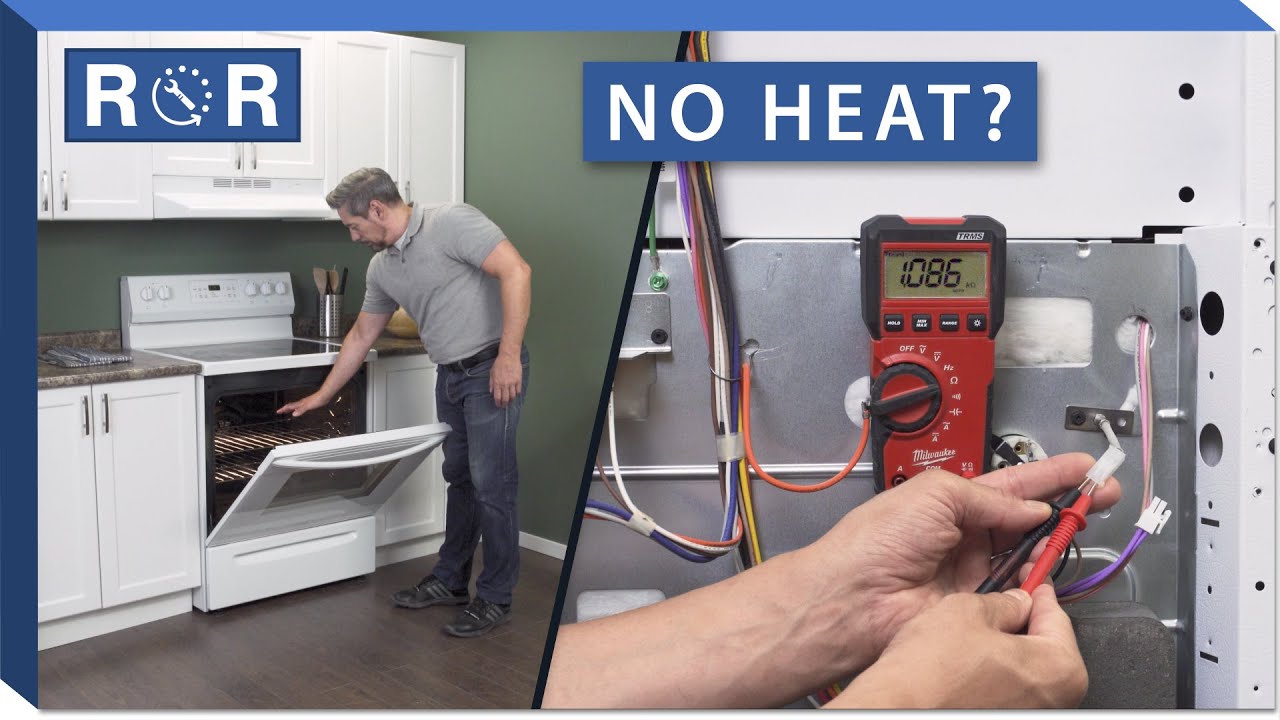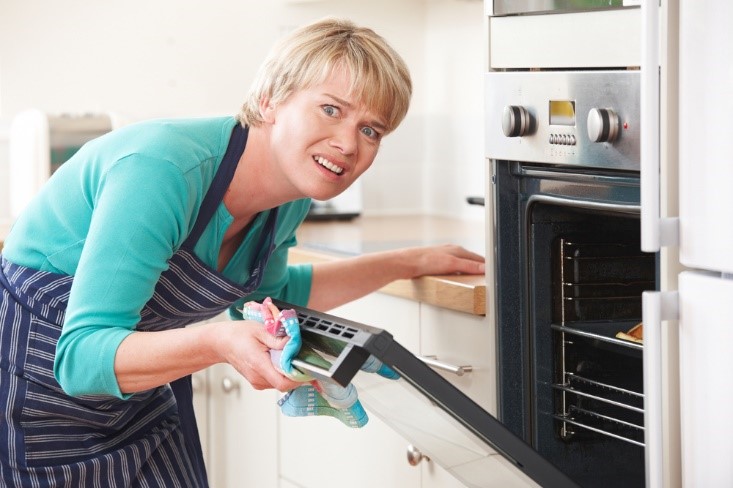If you're in the middle of preparing a delicious meal or baking a batch of cookies, discovering that your oven won't turn on can be a frustrating and stressful experience. However, there's no need to panic just yet. With some basic troubleshooting and repairs, you can often get your oven up and running again in no time.
Let's explore the most common reasons why ovens won't turn on and how to fix oven wont turn onwith practical tips. Whether you're dealing with power supply issues, a malfunctioning igniter, a burnt-out bake element, or any other common problem, we've got you covered. So let's dive in and get your oven working again!
Why Won't My Oven Turn On?
If you're having trouble with your oven not turning on, it can be a frustrating experience. Your oven is an essential appliance that you rely on for cooking meals, and when it doesn't work, it can put a real damper on your day. However, there are several reasons why your oven might not be working properly, and some of them are relatively easy to fix.
8 Reasons Your Oven Isn't Working And How To Repair It
In addition to the specific issues mentioned above, there are several other potential problems that can prevent your oven from working properly. Here are some additional issues to consider:
In this article, we'll explore the eight most common reasons why ovens fail to turn on and how torepair them.
1. Power Supply Issues
The first thing to check if your oven won't turn on is the power supply. If the power supply to the oven is disrupted or if there's an issue with the electrical outlet, the oven won't receive the electricity it needs to operate.
To check if the power supply is the issue, you can plug another appliance into the same outlet to see if it works. If the other appliance doesn't work, it's likely that the outlet is the problem.
If the outlet works fine, check the circuit breaker to make sure it hasn't tripped. If the circuit breaker has tripped, switch it back on, and see if the oven works.
2. Faulty Igniter
If the power supply isn't the issue, the next thing to check is the oven's igniter. The igniter is a component that's responsible for lighting the gas or heating element in your oven.
If the igniter is faulty or doesn't work correctly, the oven won't turn on. One way to check if the igniter is the issue is to listen for a clicking sound when you turn the oven on. If you don't hear the clicking sound, it's likely that the igniter is faulty.
To replace the igniter, you'll need to locate it and remove it from the oven. You can then install a new igniter by connecting the wires to the corresponding terminals and securing it in place.
3. Burnt-out Heating Element
Another possible reason why your oven isn't working is a burnt-out heating element. Heating elements are found in electric ovens and are responsible for heating the oven to the desired temperature.
If the heating element is burnt out, the oven won't heat up, and you'll need to replace it. To check if the heating element is the issue, you can visually inspect it for any signs of damage or wear. If you see any damage, you'll need to replace the heating element.
To replace the heating element, you'll need to locate it in the oven and remove it from the oven. You can then install a new heating element by connecting the wires to the corresponding terminals and securing it in place.
4. Broken Thermostat
The thermostat is the component that controls the temperature in your oven. If the thermostat is faulty or broken, the oven won't be able to heat up to the desired temperature, and it may not turn on at all.
One way to check if the thermostat is the issue is to use an oven thermometer to see if the temperature inside the oven matches the temperature you've set. If the temperature doesn't match, the thermostat may be faulty.
To replace the thermostat, you'll need to locate it in the oven and remove it from the oven. You can then install a new thermostat by connecting the wires to the corresponding terminals and securing it in place.
5. Malfunctioning Control Board
The control board is the component that manages the oven's functions, including the temperature settings and the timer. If the control board is faulty or malfunctioning, the oven may not turn on, or it may not operate correctly.
One way to check if the control board is the issue is to inspect it for any signs of damage or wear. If you see any damage, you'll need to replace the control board. However, if the control board isn't visibly damaged, you may need to use a multimeter to test it for continuity.
If the control board doesn't have continuity, it's likely that it's faulty and needs to be replaced. To replace the control board, you'll need to locate it in the oven and remove it from the oven. You can then install a new control board by connecting the wires to the corresponding terminals and securing it in place.
6. Defective Safety Valve
The safety valve is a component in gas ovens that prevents gas from flowing when the oven is turned off. If the safety valve is defective or damaged, it can prevent the oven from turning on.
To check if the safety valve is the issue, you'll need to use a multimeter to test it for continuity. If the safety valve doesn't have continuity, it's likely that it's faulty and needs to be replaced.
To replace the safety valve, you'll need to locate it in the oven and remove it from the oven. You can then install a new safety valve by connecting the wires to the corresponding terminals and securing it in place.
7. Clogged Burner
If you have a gas oven, a clogged burner can prevent the oven from turning on. Over time, food particles and grease can clog the burner and prevent gas from flowing. To fix a clogged burner, you'll need to remove the burner and clean it thoroughly.
You can do this by using a brush or a cloth to remove any debris or grease. Once the burner is clean, you can reinstall it in the oven and see if the oven turns on.
8. Broken Door Switch
The door switch is a safety feature that prevents the oven from turning on when the door is open. If the door switch is broken or faulty, the oven won't turn on. One way to check if the door switch is the issue is to inspect it for any signs of damage or wear.
If you see any damage, you'll need to replace the door switch. To replace the door switch, you'll need to locate it in the oven and remove it from the oven. You can then install a new door switch by connecting the wires to the corresponding terminals and securing it in place.

Oven Not Heating - Troubleshooting | Repair & Replace
People Also Ask
How Do I Clean My Oven?
To clean your oven, you can use a combination of baking soda, water, and white vinegar. First, remove any large debris or spills from the oven. Then, mix together baking soda and water to make a paste, and spread it over the interior surfaces of the oven. Let the paste sit for a few hours or overnight. Then, use a damp cloth to wipe away the paste and any grime that has loosened. For tough stains, you can spray white vinegar over the surfaces and wipe away with a damp cloth. Make sure to thoroughly rinse and dry the oven before using it again.
How Often Should I Clean My Oven?
It's a good idea to clean your oven every few months, depending on how often you use it. If you frequently cook messy or greasy foods, you may need to clean it more often. Regular cleaning can help prevent buildup and extend the lifespan of your oven.
What Should I Do If My Oven Is Smoking?
If your oven is smoking, turn it off immediately and let it cool down. Smoking can be caused by a variety of issues, including spills, grease buildup, or a faulty heating element. Once the oven has cooled down, remove any debris or spills and clean the oven thoroughly. If the smoking persists after cleaning, there may be a problem with the heating element or other components of the oven. In this case, it's best to contact a professional technician for diagnosis and repair.
Conclusion
In conclusion, there are several reasons why your oven may not be turning on. From power supply issues to faulty components, there are many potential culprits. However, with a little troubleshooting and some basic repairs, you can definitely get to know how to fix oven wont turn on and get your oven up and running again.
If you're not comfortable making the repairs yourself, it's always a good idea to consult with a professional appliance repair technician. With their expertise and knowledge, they can quickly diagnose the problem and get your oven working again in no time.
